After 3 years of trying every food storage solution out there, I would argue that the best long term food storage container is a combination of 5-gallon buckets and airtight pantry canisters (or glass jars).
Read on to learn why, and discover the system that has simplified food storage for our family.
To start, let’s discuss the best options available to us as of 2023 (as well as what not to waste your money on).
Container 1: 5-Gallon Buckets
Buckets provide an economical way to store high volumes of dried goods. They are used for items like:
- Rice
- Beans
- Peas or lentils
- Wheat berries or flour
- Sugar
- Oats
- Pasta
Prices pulled from the Amazon Product Advertising API on:
Product prices and availability are accurate as of the date/time indicated and are subject to change. Any price and availability information displayed on [relevant Amazon Site(s), as applicable] at the time of purchase will apply to the purchase of this product.
To use 5-gallon buckets to the best of your advantage, you need to know three things:
- They need to be food-grade safe.
To identify if a bucket is food-safe, look at the bottom for a recycle number, typically printed within a triangle. Look for HDPE 2 or HDPE 5.
- They need to be reasonably airtight.
The lids that typically come with 5-gallon buckets do not provide a good seal. It is worth the investment to purchase gamma-seal lids. In addition to providing an airtight seal, they are also much easier to open and close.
- They need to be protected against moisture.
Since plastic is permeable, you need a way to protect against moisture. This is accomplished with desiccant packs. They are little packets filled with silica gel that absorb moisture in their environment.
For each 5-gallon bucket, you will need (1) 10-gram desiccant pack.
Alternatively, if you can only find smaller gram sizes, you can add multiple packets to reach 10 grams total. For instance, 5-gram desiccant packs are quite common. If that’s what you have, simply place two in each bucket.
FREE FOOD STORAGE PLAN!
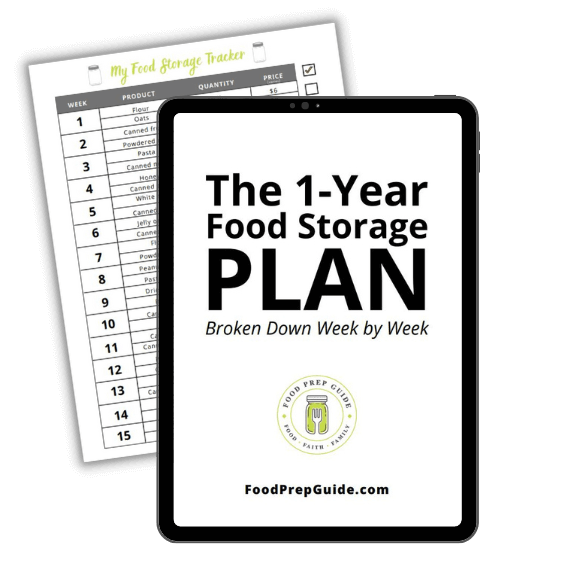
Does gathering and storing a year’s worth of food for your family seem overwhelming and unachievable?
Make it easy with our step-by-step plan. Subscribe to our weekly newsletter & we’ll send it to you FREE!
Are Mylar Bags Necessary?
Lining your buckets with mylar or using mylar pouches inside the buckets adds a layer of humidity and oxygen protection.
However, it’s only necessary if you’re planning to store the contents for more than a couple of years.
If you plan to use the food within 1-2 years, mylar bags aren’t vital to long-term food storage in 5-gallon buckets.
Container 2: Airtight Canisters with a Rubber Gasket
While some experts debate which containers are the best, it really depends on your storage needs.
However, everyone can agree that airtight containers for long term food storage are a must. The less air entering your containers, the better.
To achieve this, you can purchase canisters with a rubber gasket that work well for bulk food that you consume regularly. They’re a cinch to reseal each time you open them to use what’s inside. They’re also available in sizes that fit into your regular pantry space, making them suitable for quick access to bulk food storage.
We use and love containers such as these:
Prices pulled from the Amazon Product Advertising API on:
Product prices and availability are accurate as of the date/time indicated and are subject to change. Any price and availability information displayed on [relevant Amazon Site(s), as applicable] at the time of purchase will apply to the purchase of this product.
Plastic containers, of course, are slightly porous and will eventually allow oxygen and humidity in, even if their lids are airtight. This makes them more effective for short-to-intermediate storage than for very long-term food storage.
Container 3: Glass Mason Jars
Glass jars have several advantages:
- They can be reused an infinite number of times. You may eventually need to replace the lids, but the jars will last forever.
- The clear glass allows you to see the contents.
- Unlike plastic containers, there’s no danger of BPAs.
- The glass also keeps out humidity and oxygen.
Prices pulled from the Amazon Product Advertising API on:
Product prices and availability are accurate as of the date/time indicated and are subject to change. Any price and availability information displayed on [relevant Amazon Site(s), as applicable] at the time of purchase will apply to the purchase of this product.
However, glass jars do have some disadvantages:
- While you can choose from many sizes, most are smaller sizes. If you want to store 5 gallons of rice, larger glass containers are cost-prohibitive. (But that’s why we recommend using the rotation system below that incorporates both.)
- The visibility aspect is perfect for seeing the contents, but not so great in blocking damaging light. Though available, tinted glass is more expensive and harder to find.
- Obviously, glass is fragile.
Container 4: Vacuum-Sealed Bags
We love vacuum-sealed, long term food storage bags for several reasons:
- Using a vacuum sealer to remove excess air allows the contents to stay fresh much longer. This process is particularly beneficial in the freezer to avoid freezer burn.
- Vacuum sealing is a top-notch way to preserve shelf-stable food for reasonable amounts of time in your pantry. This process lends itself well to storing dehydrated and dried foods.
- However, like other plastic storage containers, they do eventually allow air to seep in if you plan to store your food for many years.
- They are also not rodent-proof—mice can chew through plastic.
- The primary disadvantage of vacuum sealing is that, once you’ve opened the container, you must reseal it, which isn’t feasible if you’re living off your stores. For this reason, it’s best saved for foods you don’t need access to on a weekly or monthly basis.
Combining vacuum sealing with the glass jars we talked about above will provide the benefits of both types of storage while losing some of the drawbacks.
We’ll talk more about vacuum sealing mason jars at the end of this post.
If you don’t already have a vacuum sealer and are thinking about investing in one, go for one that has an accessory port, so you can use the Mason jar attachment:
Prices pulled from the Amazon Product Advertising API on:
Product prices and availability are accurate as of the date/time indicated and are subject to change. Any price and availability information displayed on [relevant Amazon Site(s), as applicable] at the time of purchase will apply to the purchase of this product.
Containers to Avoid for Long Term Storage
Avoid the Original Packaging
One of the worst ways to store food long-term, with few exceptions, is by leaving it in its original packaging. Many foods are sold in containers that can be ruined by moisture or easily invaded by pests.
Original plastic packaging also tends to be extremely thin, exposing it to air more quickly.
That said, there are some foods that store well in their original packaging, especially if you add an extra layer of protection—like placing inside a bag and vacuum sealing it.
Other than yeast stored in those individual mylar packets, I can’t think of any foods that will stay fresh and free from damage when stored solely in their original packaging.
Avoid Plastic Bottles
Some people store foods in recycled plastic bottles to save money. This type of container may be budget-friendly, but it’s not ideal for long-term storage.
They need to be washed before using, and it’s challenging to get them completely dry in order to fill them with dry goods.
They’re also easy for mice to chew through, which can have devastating consequences.
Such plastic bottles also tend to be low-quality plastic that is laced with BPA.
Avoid Regular Storage Bags (like Ziplocs)
Regular zipper-type storage bags are simply not made for long-term prepping. Their zippers fail over time, and the plastic is too thin to resist pests and the outside environment.
These are preferable for temporary storage only.
The Practical System That Incorporates Long Term Food Storage Containers Into Your Working Pantry
The potential problem with #10 cans, mylar bags, and such is that they are not conducive to regular use.
Ideally, if you are storing food long term, you are storing what you eat and eating what you store.
The reason I say “ideally” is because this strategy allows you to rotate through your food storage so nothing gets wasted.
That said, rotating your stock can get tricky.
If you’re using a typical pantry or shelf mounted to a wall, you will need to leave enough space between rows of items to slide your hand (and new items) to the back of the shelf. If you don’t, you’ll have to remove the older items each time you purchase newer ones—which is certainly a viable option, though a time-consuming one.
If you use a free-standing shelving unit, consider placing it a foot or so from the wall, which gives you room to load items in from the back.
While both of the above options work well, we use a different type of storage system that has proven incredibly useful over the years.
For this long-term food storage rotation system, you’ll need 5-gallon buckets and a set (or two) of airtight pantry containers.
As always, you need to determine what works best for your family. That said, here’s the system we’ve settled into:
- For each item stored in a 5-gallon bucket, keep an extra, empty bucket on hand.
- Fill an easy-open, airtight container from your 5-gallon bucket. Store & use in your daily pantry.
- As your pantry container empties, continue refilling from your bucket.
- When your bucket is halfway empty, restock by filling up the extra bucket.
- When the first bucket is empty, set it aside for a future refill, and start refilling your pantry container with the recently restocked bucket.
- Repeat the cycle as needed.
If you plan on using 5-gallon bucket storage, we highly recommend switching out those flimsy lids with Gamma lids like these:
Prices pulled from the Amazon Product Advertising API on:
Product prices and availability are accurate as of the date/time indicated and are subject to change. Any price and availability information displayed on [relevant Amazon Site(s), as applicable] at the time of purchase will apply to the purchase of this product.
Useful Preservation Items That Can Make Your Food Last Longer
Whether you’re able to purchase the best type of container possible, or you must make do for budget reasons, there are add-ons to use with your food-grade storage containers that increase their ability to preserve your family’s food supply.
Oxygen Absorbers
First up are oxygen absorbers. Until I got serious about food preservation, I’d never heard of these.
Using oxygen absorbers alongside other storage methods mitigates some of the disadvantages to the containers we discussed above.
Prices pulled from the Amazon Product Advertising API on:
Product prices and availability are accurate as of the date/time indicated and are subject to change. Any price and availability information displayed on [relevant Amazon Site(s), as applicable] at the time of purchase will apply to the purchase of this product.
They remove oxygen from their local environment, which not only extends the life of the food but makes it impossible for most insects to survive.
It’s important to make sure you’re using these little helpers properly though. They should only be added to containers of dry food (10% or less moisture and oil content).
Otherwise, the combination of the oxygen absorber and the moisture/oil can result in botulism, which is deadly. They should, for example, never be used with brown sugar.
They should also not be used in yeast storage, as yeast is alive and needs some oxygen in the air to survive.
Desiccant Packs
You’ve probably seen desiccant packs many times, especially in medication bottles. Also called silica packets (or silica gel), they serve to remove moisture from their surroundings.
While silica itself is not safe to consume, desiccant packs are approved for use in long-term food storage because the silica is packaged in Tyvek. This keeps it from coming into direct contact with your food.
Prices pulled from the Amazon Product Advertising API on:
Product prices and availability are accurate as of the date/time indicated and are subject to change. Any price and availability information displayed on [relevant Amazon Site(s), as applicable] at the time of purchase will apply to the purchase of this product.
I use them mostly to store dried fruits.
Diatomaceous Earth
While I’ve used diatomaceous earth before to protect young plants from chewing insects, I didn’t know it could be used directly in your food. Surprisingly, it’s safe for humans to consume in low amounts!
Diatomaceous earth is a naturally occurring, powdered substance made from fossilized algae. If you were to look at it under a microscope, you’d see lots of sharp, pointy edges.
They don’t harm us, but they do harm—and kill—insects.
It’s important to only use food-grade diatomaceous earth, and you don’t have to much (usually a teaspoon per pound of food). Also, pour the DE slowly so as to minimize dispersion in the air. You want to avoid breathing it in.
We sprinkle it into our 5-gallon buckets of rice, beans, and pasta since such foods can easily be rinsed before use.
Prices pulled from the Amazon Product Advertising API on:
Product prices and availability are accurate as of the date/time indicated and are subject to change. Any price and availability information displayed on [relevant Amazon Site(s), as applicable] at the time of purchase will apply to the purchase of this product.
Bay Leaves
Bay leaves aren’t just for homemade spaghetti sauce and chicken cacciatore—who knew? These leaves are awesome for keeping insects out of your food supply. Pests simply hate the smell of it!
You can place bay leaves inside your food containers or sprinkle throughout the area where they are stored.
Be sure to replace them every few months since they do lose effectiveness over time. We buy them by the pound to keep on hand:
Prices pulled from the Amazon Product Advertising API on:
Product prices and availability are accurate as of the date/time indicated and are subject to change. Any price and availability information displayed on [relevant Amazon Site(s), as applicable] at the time of purchase will apply to the purchase of this product.
Mason Jar Vacuum Sealer Attachment
As I mentioned above, vacuum-sealing Mason jars is a way to mitigate some of the drawbacks found in using glass jars by themselves or vacuum-sealed bags.
To vacuum seal your jars, you need an attachment that connects to the jar lid. This removes excess air from inside and creates a vacuum:
- For use with mason-type jars
- Great for sauces, mustards, and jams
- Odor proof and stain resistant
- Dishwasher safe
- BPA Free, environmentally s
Prices pulled from the Amazon Product Advertising API on:
Product prices and availability are accurate as of the date/time indicated and are subject to change. Any price and availability information displayed on [relevant Amazon Site(s), as applicable] at the time of purchase will apply to the purchase of this product.
Be aware that this storage method is not the same as canning and should be reserved for dried goods. It’s a fantastic method for storing items like oats, rice, beans, pasta, and more for as long as possible.
If you’re trying to store food long-term, it’s imperative you find the best containers for long term food storage.
By “best,” I mean containers that deliver adequate protection from:
- The environment
- Natural or man-made disasters (flooding, earthquakes, supply chain issues)
- Pests
- Moisture
- Oxygen
Hopefully, using one or more of the methods I’ve outlined above will allow you to protect your family’s food supply from future shortages or simply to save money by purchasing in bulk!
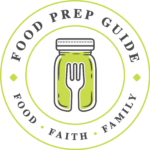
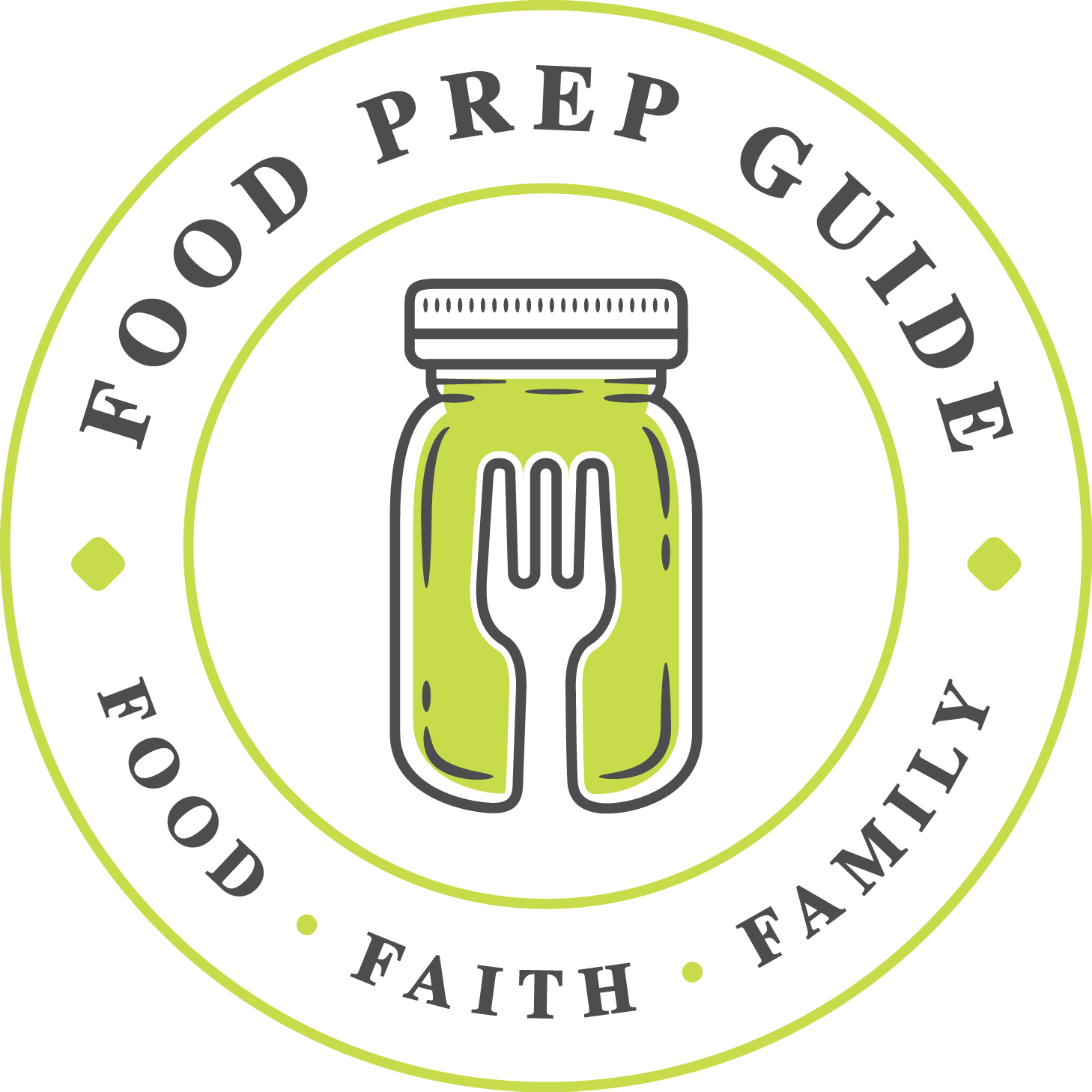
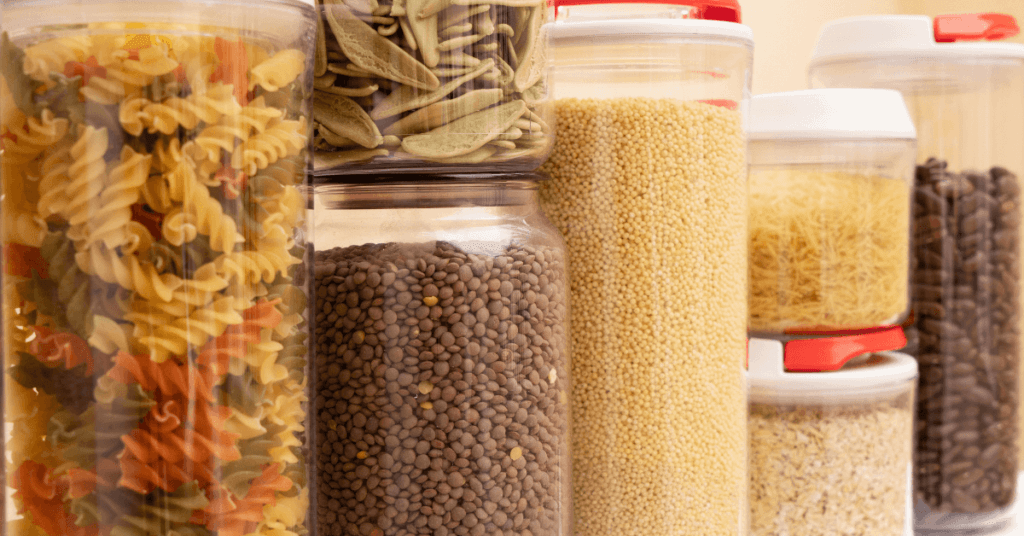




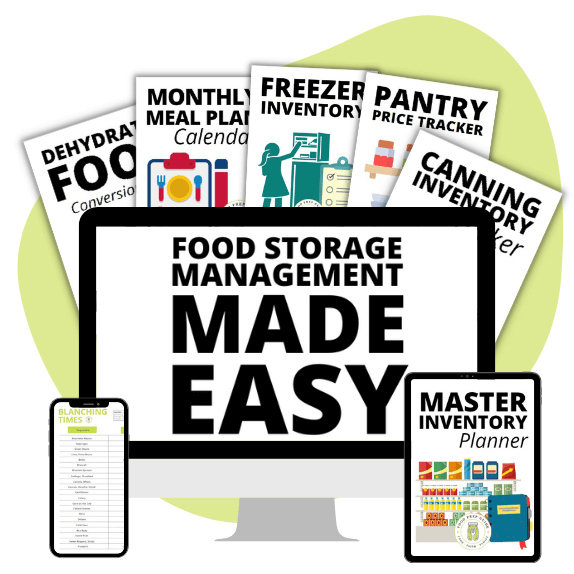






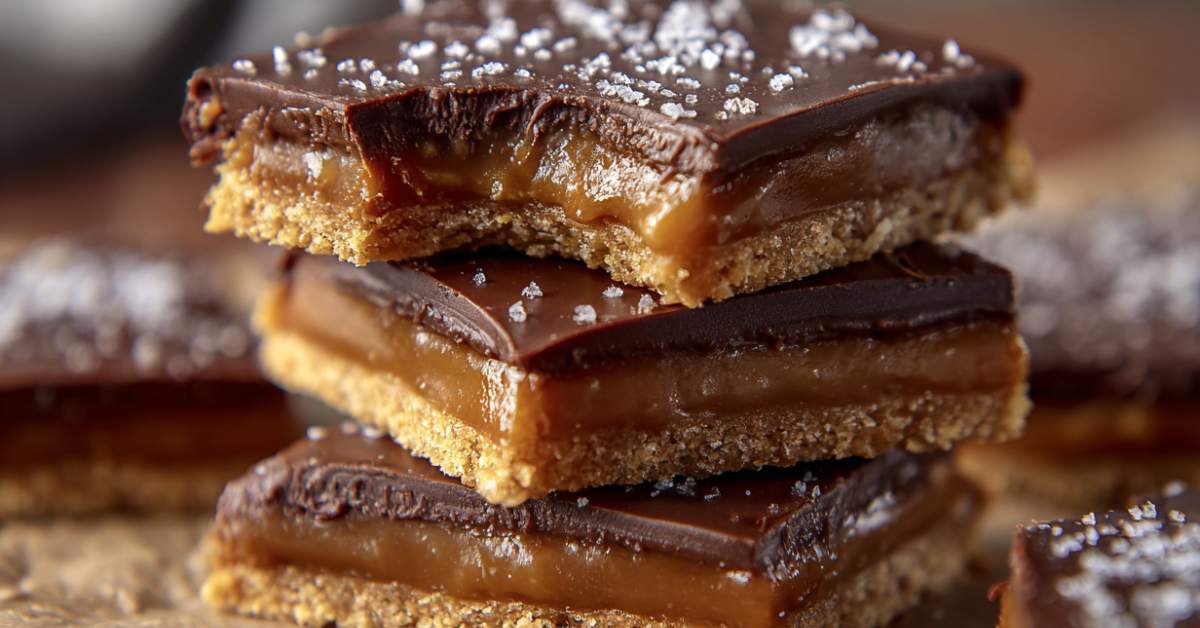
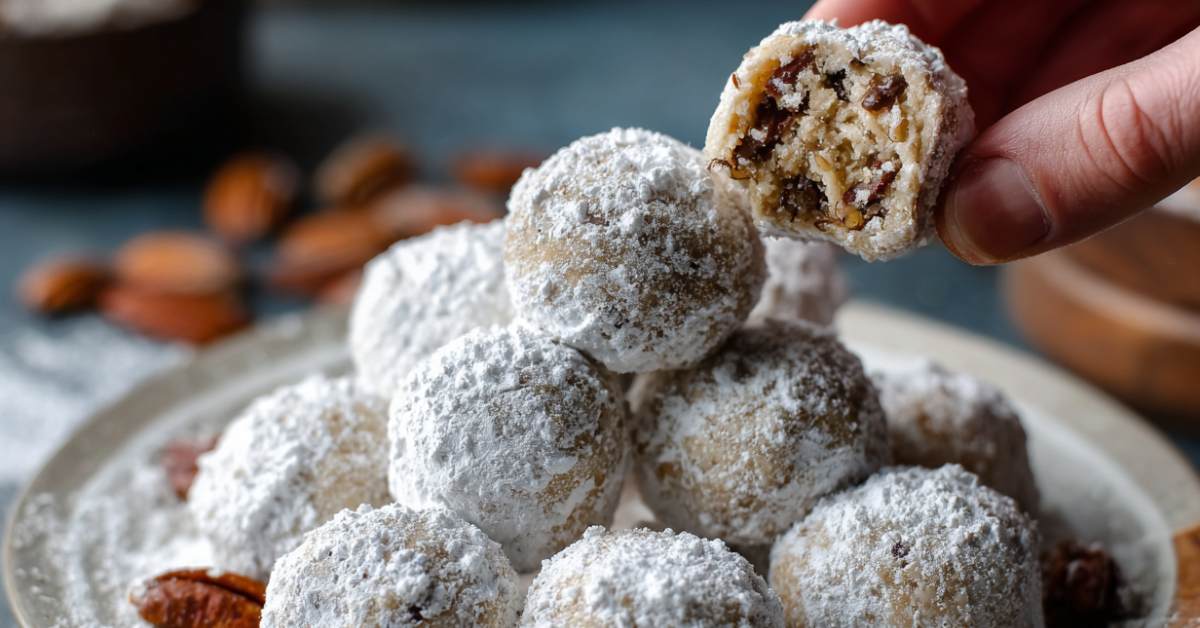






thank you this is a great article easy to understand and very informative, we are about to move onto a small homestead and
very interested in storing in bulk as we don’t want to waste time shopping every week.
How fun! That’s why we switched to bulk shopping, too. Well, that and the savings. 🙂
I’d like to know if rubbermaid or Tupperware containers would qualify as long term storage containers? Thank you
No, they’re not suitable for long-term storage unless you combine another storage method with it.
For instance, I used to vacuum seal rice into 10-lb packages. (The oxygen-free environment is what made it suitable for long-term storage.)
But then I stored all of those vacuum-sealed bags in an XL Rubbermaid container.
Hope that helps! 🙂